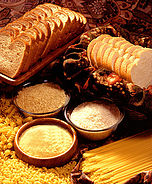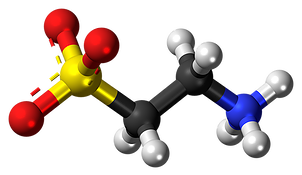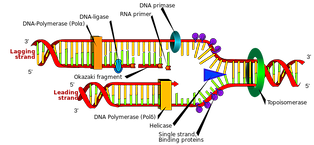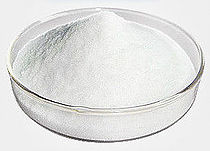General Information
BELOW YOU WILL FIND INFORMATION RELATING TO THE TERMS USED WHEN DESCRIBING TYPICAL NUTRITIONAL INOFRMATION AND GENERAL TERMS OFTEN LISTED IN THE INGREDIENTS SECTION OF SUPPLEMENT LABELS
Energy
Energy, in respect of food, means the amount of energy made available to a persons body when the chemical constituents of the food, including protein, fat, carbohydrate and alcohol, are metabolized following ingestion of the food by the person. It is measured in calories. (1)
Protein
Organic molecules used to repair muscle cells after the cells are broken down. Proteins are essential nutrients for the human body, they are the building blocks of body tissue and can also serve as a fuel source. Protein is chains of amino acids linked together, and during digestion, these chains are broken down to smaller chains which is crucial for the synthesis of the essential amino acids that cannot be biosynthesized in the body. (2)
Carbohydrate
A Carbohydrate is any of a large group of organic compounds occurring in foods and living tissues, which include sugars, starch and cellulose. They provide the body with glucose, which is converted to energy used to support bodily functions and physical activity. (3)
Sugar
Sugar is the generalized name for, short chained, soluble carbohydrates used in food, which are derived from many sources. Simple sugars are called monosaccharides and include dextrose (glucose) and fructose. They are sweet in taste and have a high glycemic index.
Table sugar (refined sucrose) is a disaccharide carbohydrate comprising one part glucose and one part fructose. It is broken down in the body where glucose passes from the small intestine, into the blood stream. The fructose travels to the liver to be metabolized, the only organ which is able to do so. (4)
Fat
Fats (triglycerides) are organic compounds, which are a source of energy and essential fatty acids in food. They belong to a group called lipids and come in liquid or solid form. (5)
Cholesterol
Cholesterol is an organic molecule, a compound of the sterol type found in most body tissues. It is a waxy, fat-like substance. Cholesterol and its derivatives are important constituents of cell membranes and serve as a precursor for the biosynthesis of steroid hormones and bile acids. It travels through the bloodstream in small packages called lipoproteins.
Two kinds of lipoproteins carry cholesterol: low-density lipoproteins (LDL) and high-density lipoproteins (HDL). LDL is considered the ‘bad’ as it leads to a buildup of cholesterol in arteries. (6)
Dietary Fiber
Dietary fiber, or roughage, is material containing substances such as cellulose, lignin, and pectin, that are resistant to the action of digestive enzymes and unlike fats, proteins and carbohydrates, fiber isn’t digested and passes relatively intact through the body. It is found mainly in fruits, vegetables, whole grains and legumes. (7)
Sodium
Sodium is a chemical element of atomic number 11, a soft silver-white reactive metal of the alkali-metal group. Sodium is an essential mineral that regulates blood volume and pressure. It is also needed for muscles and nerves to work properly. Sodium Chloride, more commonly known as salt, is our principal source of sodium in our diet, although we do also obtain it from its natural occurrence in some foods. (8)
Calcium
Calcium is a chemical element of atomic number 20, a soft grey alkaline earth metal. It is the most abundant mineral in the body and most of the body’s supply is stored in the bones and teeth where it supports their structure and function. Calcium occurs naturally in many foods we eat however dietary calcium supplements are also widely available. (9)
Phosporus
Phosphorus is a chemical element of atomic number 15, a combustible non-metal which exists in two common forms, white phosphorus, a yellowish waxy solid which ignites spontaneously in air and glows in the dark, and red phosphorus, a less reactive form used in making matches. It is however essential for life, present in every cell in the body and plays an essential role in the structural framework of DNA and RNA. Living cells use phosphate to transport cellular energy with adenosine triphosphate (ATP). The main food sources of phosphorus are the protein food groups and as general rule, if a diet has sufficient protein and calcium, the amount of phosphorus is probably sufficient. (10)
Potassium
Potassium is a chemical element of atomic number 19, a soft silvery-white reactive metal of the alkali-metal group. Potassium is chemically similar to sodium. Among other uses, potassium levels influence multiple physiological processes, including but not limited to the propagation of action potentials in neuronal, muscular and cardiac tissue, hormone secretion and action, vascular tone, systemic blood pressure control, glucose and insulin metabolism and fluid and electrolyte balance. A normal healthy diet should provide sufficient amounts of potassium. (11)
Magnesium
Magnesium is a chemical element of atomic number 12, a shiny gray metal of the alkaline earth series. It is used to make strong lightweight alloys, and is also used in flash bulbs and pyrotechnics, as it burns with a brilliant white flame. It is the eleventh most abundant element in the body by mass, and the ions are essential to all cells. Hundreds of enzymes require magnesium ions for their catalytic action, including all enzymes synthesizing ATP and energy production. It also plays a role in protein synthesis, muscle and nerve function, blood glucose control and blood pressure regulation.
Sources rich in magnesium include nuts, cereals, cocoa, vegetables and spices. Magnesium supplements are also widely available. (12)
Chloride
Chloride is a compound of chlorine with another element or group, especially a salt of the anion Cl− or an organic compound with chlorine bonded to an alkyl group. It is an essential electrolyte located in all body fluids for transmitting nerve impulses and regulating fluid in and out of cells. Its sources include table salt and sea salt as sodium chloride. It is also found in many vegetables.
The body can become chloride deficient when the body looses to much fluid because of heavy sweating, vomiting or diarrhea. Diuretics can also cause low chloride levels. (13)
Creatine Monohydrate (Not Creatinine)
Creatine is an organic acid that occurs naturally in the body to help supply energy to all cells, primarily muscles. This is due to the formation of adenosine triphosphate. It is naturally produced in the human body from the amino acids glycine and arginine. Synthesis primarily takes place in the kidney and liver, and transported to the muscles via blood.
Creatine monohydrate is the most common form of creatine supplementation, being creatine complexed with a molecule of water. It is one of the most widely studied and taken supplements due to its performance enhancing properties in physical activity.
Creatine Hydrochloride (Creatine HCL) is another common creating supplement, being more soluble in water than the monohydrate. (14)
Other videos about Creatine (information to be used at own risk - accuracy is not guaranteed)
Video 1
Video 2
Video 3
Taurine
Taurine is an amino sulfonic acid, often referred to as an amino acid, but not in the usual biochemical meaning of the term, which refers to compounds containing both an amino and a carboxyl group. It is also sometimes referred to as a semi-essential amino acid as it can be produced by the body, from cysteine. It is essential for the development and function of skeletal muscle, the retina and the central nervous system.
Taurine functions as an antioxidant. Antioxidants protect the body’s cells from damage that results from certain chemical reactions involving oxygen. It is also thought to increase the maximum capacity of a person’s body to transport and use oxygen. Under conditions of stress and exercise, taurine is utilized in the body and has thus become a popular ingredient in energy drinks.
Taurine occurs naturally in meat and fish, but most supplemental taurine is synthetically manufactured. (15)
Tribulus Terrestris
Tribulus terrestris is a flowering plant native to the warm temperate and tropical regions. It is widely used in traditional Chinese medicine and as an extracted dietary supplement for body builders. It was thought to be a relatively reliable and potent libido enhancer and testosterone booster (commonly promoted as a testosterone booster additive and lean muscle promoter).
While research has shown it may be a mild libido enhancer, it has repeatedly failed to increase testosterone levels and lean muscle gains in controlled studies. According to Jim White, registered dietitian and American Dietetic Association spokesperson, the best way to enhance testosterone is to exercise. Blood levels of testosterone increase with just 20 minutes of exercise and remain elevated for up to three hours after. (16)
Magnesium Oxide
Magnesium oxide is a white hygroscopic solid mineral that occurs naturally as periclase and is a source of magnesium. The body used magnesium to help turn food into energy, regulate blood sugar levels, synthesize protein, maintain a steady heart rate, keep nerves and muscles functioning properly and your bones strong.
It is medically used, among others, as a mineral supplement to prevent and treat low amounts of magnesium in the blood (a well balanced diet usually provides normal blood levels of magnesium). In situations where the body loses magnesium faster than it can be replaced by a balanced diet, supplementation may be necessary. One of these situations includes use of substances that are diuretics, which promotes the production of urine. (17)
Magnesium AAC
Magnesium Amino Acid Chelate (AAC) is a mineral chelate form of magnesium containing an ion of magnesium oxide connected to a mixture of some other form of amino acid. This could be a glycine, aspartate or arginate, etc. Magnesium AAC is also used to maintain adequate levels of magnesium in the body, as explained in magnesium oxide. (18)
Glycine
Glycine is one of the 20 amino acids commonly found in proteins, and being a non-essential amino acid meaning it is biosynthesized (converted) in the body, from the amino acid serine. It is an inhibitory neurotransmitter in the central nervous system and helps break down and transport nutrients to be used by cells for energy. In the correct dose, it has also been found to improve sleep quality.
It is a colourless, sweet-tasting crystalline solid and commonly used as a sweetener or taste enhancer in foods.
Some of the key benefits of glycine include:
- Promoting muscle growth
- Repairs and protects joints and cartilage
- Improved digestion
- Building the immune system
- Calming the nerves and feeds the brain
- Fighting fatigue and promoting restful sleep (19)
Dextrose
Dextrose, a carbohydrate derived from starch, is a simple sugar that is chemically identical to glucose, or blood sugar.
It is often used as sweetener in baking products and is commonly found in processed foods and some bodybuilding supplements.
Because it is a simple sugar, the body can quickly use it for energy. It should be remembered that while it is easy for the body to break it down, it lacks other essential nutrients, protein and fat, needed to increase muscle mass. It has a high glycemic index, which means it quickly raises the blood sugar level, when taken in sufficient quantity.
Other commonly used names for dextrose include corn sugar, wheat sugar, dextrose, anhydrase, grape sugar, dextrose monohydrate and d-glucose.
Dextrose differs from Sucrose; more commonly known as table sugar, where sucrose is made from one molecule of glucose connected to one molecule of fructose, dextrose consists of just one molecule of glucose. Dextrose is ready to be absorbed into your system whereas before the body can use table sugar, digestive enzymes must first split sucrose, after which the glucose passes from the small intestine, into the blood stream. The fructose travels to the liver to be metabolized, the only organ which is able to do so. (20)
Maltodextrin
Maltodextrin is a polysaccharide produced from starch by partial hydrolysis. It is moderately sweet or almost flavorless and often used in the production of soft drinks, candy and as food additives. It is also fast absorbing, similar to dextrose.
Maltodextrin is simply multiple dextrose molecules (d-glucose units) chained together in varying lengths.
There are two types of maltodextrin, the first being a simple carbohydrate containing calories and designed to provide a boost of energy. The second type is resistant maltodextrin, which comes from the same source but processed to be indigestible. It doesn’t provide energy but does provide benefits similar to soluble fibres. (21)
Vitamins
Vitamins are organic compounds needed by the body to grow and function correctly. There are 13 vitamins needed by the body namely Vitamin A, C, D, E, F and B Vitamins (Thiamine, Riboflavin, Niacin, Pantothenic acid, Pyridoxine, Biotin, Folic acid and Cyanocobalamin). We usually obtain all the vitamins we need by consuming a balanced diet of a variety of foods and water. (22)
Essential Fatty Acids (EFAs)
Essential fatty acids are fats that the body cannot synthesize and must therefore be obtained from food. Only two fatty acids are known to be essential for humans. These are alpha-linolenic acid (omega-3) and linoleic acid (omega-6). These fats are important for the normal functioning of all tissues of the body. It is important to consume these two fatty acids in the correct ratio as they compete for use in the body. (23)
Glutamine
Glutamine, also known as L-Glutamine, is an α-amino acid that is used in the biosynthesis of proteins. It is a non-essential amino acid, meaning sufficient amounts can normally be produced within the body, however in some instances of stress, the body’s demand for glutamine increases and must be obtained from diet. It is also known to be a very effective intestinal and immune system health compound. It is sometimes promoted as a muscle builder, but has not proven to enhance muscle building in healthy individuals. In situations where muscle wasting occurs, such as AIDS or those suffering from physical trauma, it is effective at building muscle and alleviating a decrease in muscle mass. (24)
L-Glutamine and Glutamic Acid
Both glutamine (L-Glutamine) and glutamic acid are non-essential amino acids and while sounding similar, they are different.
L-Glutamine is essential for immune health and aids in eliminating toxic ammonia from your body.
Glutamic acid is an important brain neurotransmitter. It is also known as a component of monosodium glutamate (MSG). (28)
Cocoa Powder
Cocoa powder is extracted from the cocoa bean, also called cocao bean, where the seeds / beans are fermented, dried, roasted and grinded into a paste. The fat is removed from the paste leaving the dry cocoa powder. It is a common ingredient in chocolate.
The powder contains several minerals including calcium, copper, magnesium, phosphorus, potassium, sodium, zinc and iron. (25)
Systhesis
Synthesis means the formation or building of a more complex compound from simpler compounds or elements. (26)
Biosynthesis
Biosynthesis, also known as biogenesis or anabolism, is a multi-step, enzyme-catalyzed process where substances are converted into more complex products in living organisms. (27)
Zinc Lactate
Zinc lactate is a zinc salt of lactic acid. It is a white granular or crystalline powder that is easily soluble in water. It has anti-microbial action and is commonly found in toothpaste, mouthwash, chewing gum and other hygiene products. (29)

























